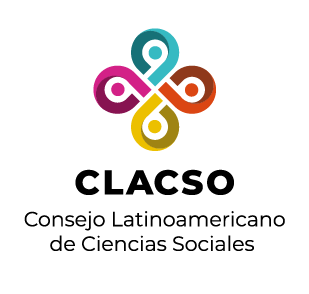Red de Bibliotecas Virtuales de Ciencias Sociales en
América Latina y el Caribe

Por favor, use este identificador para citar o enlazar este ítem:
https://biblioteca-repositorio.clacso.edu.ar/handle/CLACSO/238444Registro completo de metadatos
| Campo DC | Valor | Lengua/Idioma |
|---|---|---|
| dc.creator | Daizo, María Belén | - |
| dc.date | 2019-11-30 | - |
| dc.date.accessioned | 2023-03-27T19:45:37Z | - |
| dc.date.available | 2023-03-27T19:45:37Z | - |
| dc.identifier | http://revistascientificas.filo.uba.ar/index.php/rihao/article/view/7109 | - |
| dc.identifier | 10.34096/rihao.n20.7109 | - |
| dc.identifier.uri | https://biblioteca-repositorio.clacso.edu.ar/handle/CLACSO/238444 | - |
| dc.description | La naturaleza de las relaciones entre Egipto y el Levante meridional en el IV milenio a.C. ha estado en el centro de un amplio debate, principalmente a partir de mediados del siglo XX. El registro arqueológico que evidencia estos vínculos se remonta al Calcolítico tardío y se acentúa considerablemente durante el Bronce Antiguo I. Estos hallazgos permiten dar cuenta de diferentes tipos de bienes que han circulado entre ambas regiones y que conforman una compleja red de interacción desde momentos tempranos. El objetivo central de este estudio es identificar y analizar cuáles fueron los mecanismos involucrados en las redes de circulación de bienes entre Egipto y el Levante meridional y las dinámicas implicadas en esta trama de relaciones. Para ello, el foco del análisis se ha colocado en dos sitios que permiten, por medio de diferentes indicadores arqueológicos, establecer concretos paralelos y arrojar luz sobre estas relaciones: Tell el-Farkha (en el área oriental del Delta del Nilo) y Tel Erani (en la zona centro-sur del Levante meridional). | es-ES |
| dc.description | The nature of the relations between Egypt and the southern Levant in the IV millennium BC has been in the center of a wide debate, mainly since the mid-twentieth century. The archaeological record evidencing these links dates back to the Late Chalcolithic period and is considerably accentuated during the Early Bronze Age I. These findings allow us to account for different types of goods that have circulated between both regions and that form a complex network of interaction from early times. Therefore, the main goal of this article is to identify and analyze the mechanisms involved in the networks of goods circulation between Egypt and the southern Levant and the dynamics involved in this network of relationships. To do this, the focus of analysis has been placed on two sites that allow us, through different archaeological indicators, to draw specific parallels and shed light on these relationships: Tell el-Farkha (in the eastern area of the Nile Delta) and Tel Erani (in the south-central area of the southern Levant). | en-US |
| dc.format | application/pdf | - |
| dc.language | spa | - |
| dc.publisher | Instituto de Historia Antigua Oriental, Facultad de Filosofía y Letras, UBA | es-ES |
| dc.relation | http://revistascientificas.filo.uba.ar/index.php/rihao/article/view/7109/6355 | - |
| dc.source | Revista del Instituto de Historia Antigua Oriental; Núm. 20 (2019); 23-51 | es-ES |
| dc.source | 2683-9660 | - |
| dc.source | 0325-1209 | - |
| dc.subject | Egypt | en-US |
| dc.subject | southern Levant | en-US |
| dc.subject | IV millennium BC | en-US |
| dc.subject | circulation of goods | en-US |
| dc.subject | Tell el-Farkha | en-US |
| dc.subject | Tell Erani | en-US |
| dc.subject | Egipto | es-ES |
| dc.subject | Levante meridional | es-ES |
| dc.subject | IV milenio a.C. | es-ES |
| dc.subject | circulación de bienes | es-ES |
| dc.subject | Tell el Farkha | es-ES |
| dc.subject | Tel Erani | es-ES |
| dc.title | Circulación de bienes entre Egipto y el Levante meridional en el IV milenio a.C. | es-ES |
| dc.title | Circulation of goods between Egypt and the southern Levant in the 4th millennium BC. | en-US |
| dc.type | info:eu-repo/semantics/article | - |
| dc.type | info:eu-repo/semantics/publishedVersion | - |
| dc.type | Artículo revisado por pares | es-ES |
| Aparece en las colecciones: | Secretaría de Investigación y Posgrado - SIPFyL/UBA - Cosecha | |
Ficheros en este ítem:
No hay ficheros asociados a este ítem.
Los ítems de DSpace están protegidos por copyright, con todos los derechos reservados, a menos que se indique lo contrario.